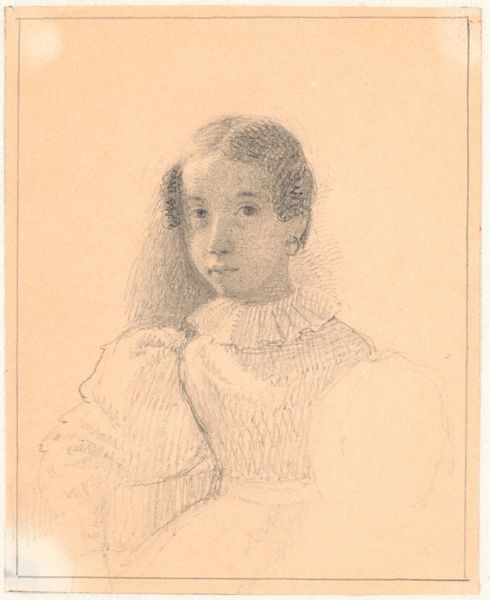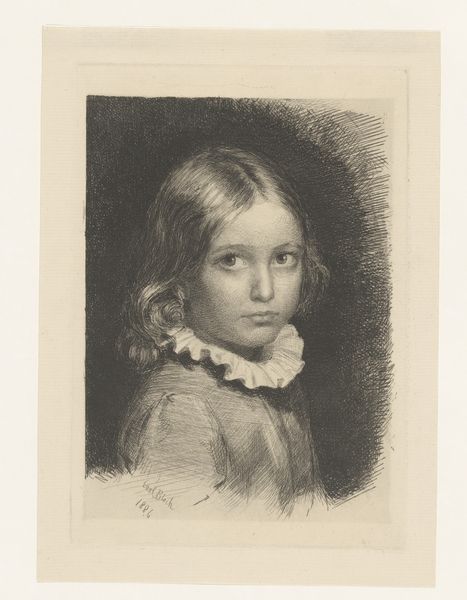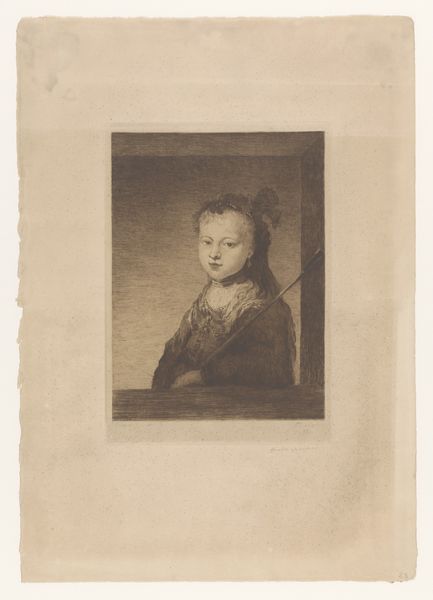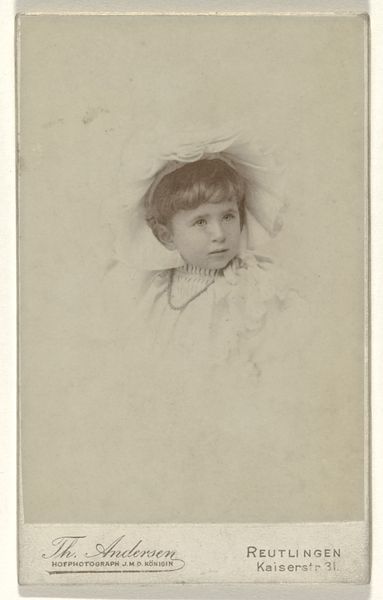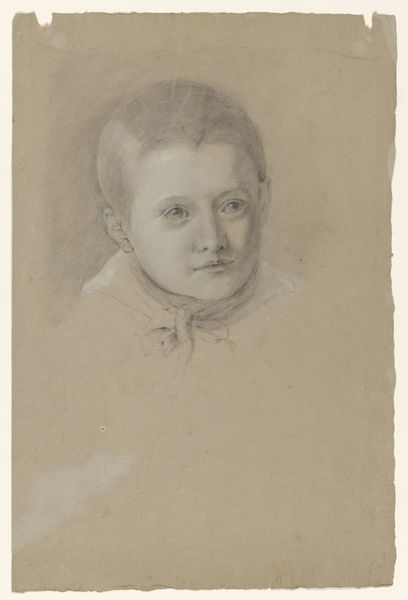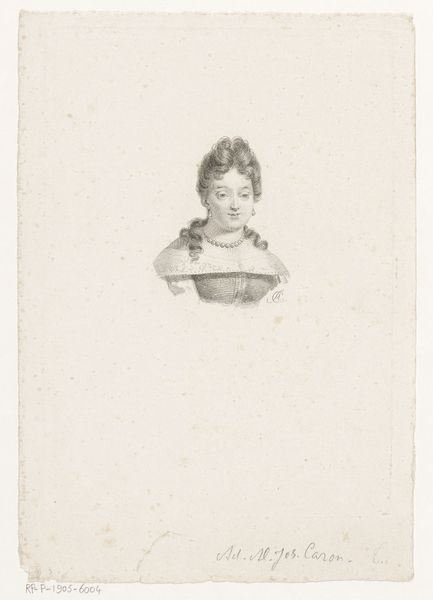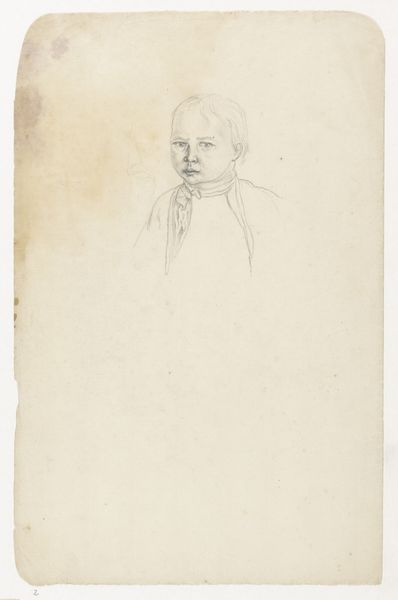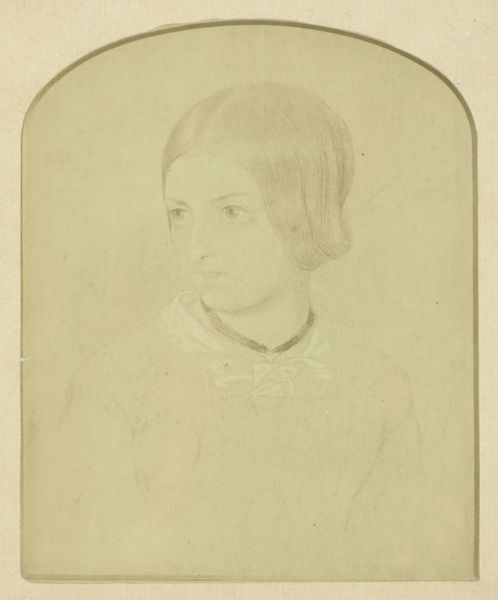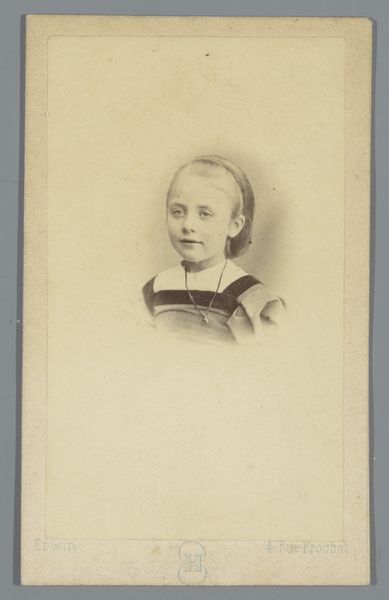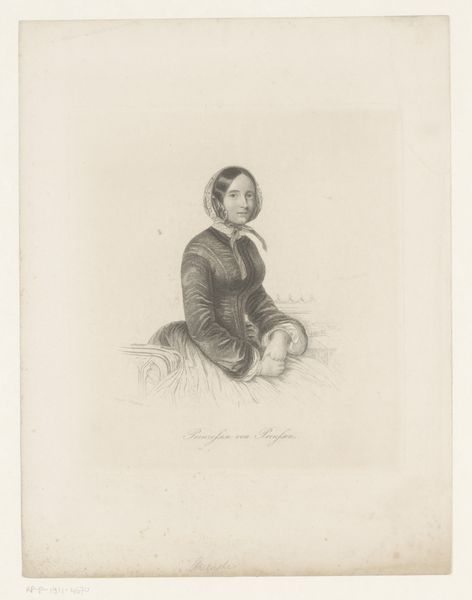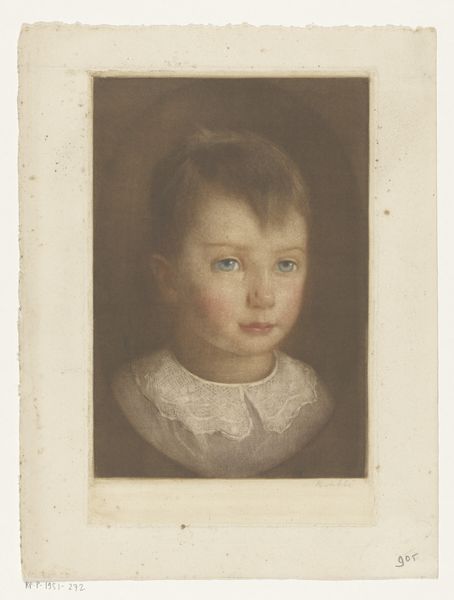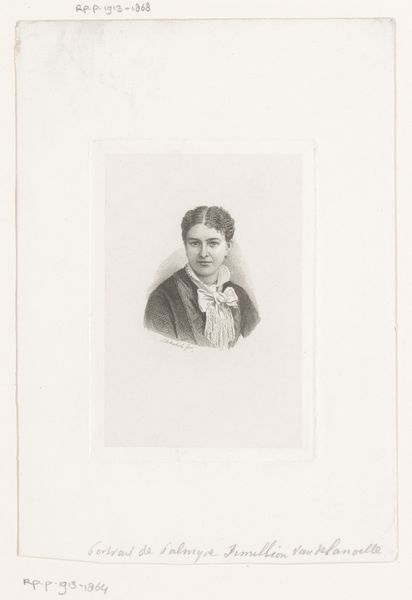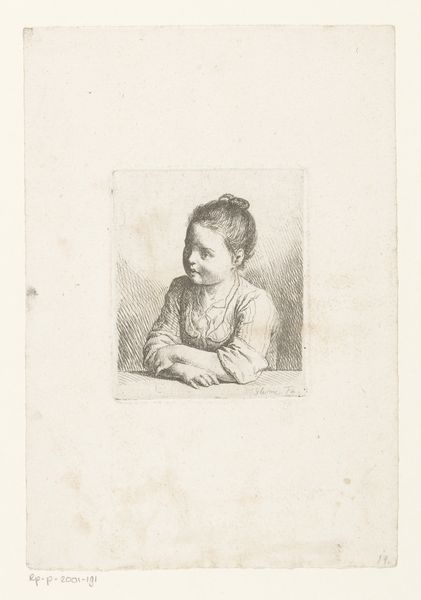
drawing, print, pencil
#
portrait
#
pencil drawn
#
drawing
# print
#
pencil sketch
#
figuration
#
pencil drawing
#
pencil
#
realism
Dimensions: Plate: 10 1/16 × 7 11/16 in. (25.5 × 19.5 cm) Sheet: 13 1/2 in. × 9 in. (34.3 × 22.8 cm)
Copyright: Public Domain
Curator: This is "Portrait of a Young Girl," a pencil drawing executed by Luigi Calamatta around 1832. It currently resides here at the Metropolitan Museum of Art. Editor: My first impression is the incredible delicacy of line. There's a gentle stillness to it, almost melancholic, like a memory fading at the edges. Curator: Absolutely. Calamatta was a master of conveying emotional depth through subtle visual cues. This piece, though a simple drawing, resonates with a certain archetypal representation of innocence and childhood, perhaps even a visual manifestation of the *puer aeternus*. Editor: The "eternal child"… interesting. It makes me wonder about the power dynamics inherent in portraiture of young people, especially young girls, during that era. Was she viewed as a symbol, an object, before being seen as an individual with agency? Curator: That's a valid and important perspective. The sitter's expression seems almost...resigned? Considering Calamatta's interest in romantic ideals, this resignation is striking. Is it imposed or innate? Does this symbol perpetuate a harmful legacy? Editor: Right. Think of the Romantic obsession with youthful fragility. Did that obsession shape her gaze, both in the artist’s rendering and the sitter's posture? And how do we, as viewers today, unburden her of that historical weight, that representation, and truly *see* her? Curator: That's precisely the conundrum, isn't it? We navigate these layers of meaning, always aware of the lens through which we view the past and its symbols. And it should remind us that not only can visual media preserve identity and culture, but, at times, it also threatens them. Editor: Exactly! This drawing offers a seemingly simple depiction, but its threads connect to so much larger conversation about representation, agency, and the enduring impact of how we choose to depict one another. Curator: Yes, indeed. It underscores that even the quietest of images can whisper complex and potent narratives across time. Editor: Agreed. Seeing the art in its complete context, past and present, is an invitation for empathy and a responsibility that’s just as necessary now as it was in 1832.
Comments
No comments
Be the first to comment and join the conversation on the ultimate creative platform.

